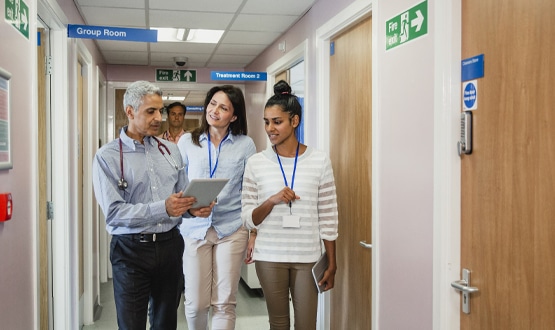Screening Programme automates reporting
- 13 May 2008
The English National Screening Programme for Diabetic Retinopathy (ENSPDR), run by the Gloucestershire Hospitals NHS Foundation Trust, is to go live later this year with a new reporting application called EARS, built by Quicksilva Software Solutions.
EARS will streamline the diabetic retinopathy screening programme‘s reporting process for Local Screening Programmes (LSPs) across England.
Currently, around 100 LSPs submit annual reports to the ENSPDR to help provide indicators of performance and review risks, service delivery and further improvement.
EARS will automate the reporting process allowing LSPs to submit their report in one of two ways – via a web interface or by uploading an HL7v3 message with the support of the screening software providers.
Adam Gregory, national technical development manager at ENSPDR, told E-Health Insider: “The process currently is very time intensive as reports are submitted manually in varying formats and the ENSPDR also has manual processes for monitoring, recording, collating and analysing the information.
“EARS will provide us with the necessary level of automated co-ordination to streamline the yearly reporting process enabling data to be more easily collated and analysed. It offers a more flexible reporting model for the LSPs and should enable programmes to get earlier automated feedback on performance.”
ENSPDR worked closely with Quicksilva to ensure the specification for the system covered all the details needed for the service, and was able to interface with the variety of systems used to create reports by the 105 screening centres.
Gregory said: “From the beginning, we took into account feedback from all of our centres on how data was currently collated, and how integration could be achieved. It was essential that EARS could interface with all of these systems and produce a standardised report to help us make faster analysis of the service we are providing and provide feedback to each centre in a more efficient manner.”
Using a central software portal to facilitate the annual collection of data, including the associated workflow, document management and associated administrative processes, EARS will run through a web interface, built using Microsoft Sharepoint.
The work flow functionality of Sharepoint will streamline the submission of reports as well as providing increased levels of support. EARS will immediately carry out checks and validate some of the key pieces of information prior to it being submitted.
If an LSP has filled in a part of the report inaccurately, they will be notified and an example report supplied so they can see the kind of information expected of them.
Gayna Hart, managing director of Quicksilva said: “Many NHS bodies face a data mountain – climbing to the top of that mountain is central to improving service delivery and providing early diagnosis. We’re delighted to be working with the ENSPDR to help them create efficiencies in their reporting and free up time that can be channelled into other activities.”
Link




